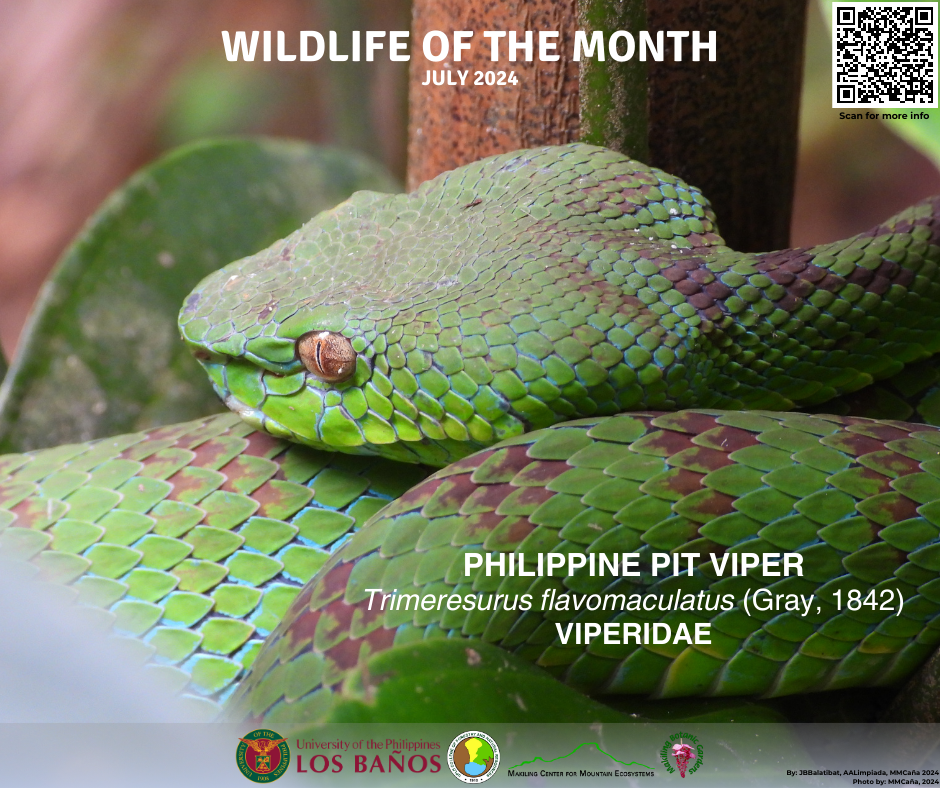
The Makiling Botanic Gardens (MBG) Wildlife of the Month (WOM) for July 2024 is the Philippine Pit Viper, scientifically known as Trimeresurus flavomaculatus (Gray, 1842) of the family Viperidae. This pit viper is endemic to the Philippines; recorded from the Babuyan Islands, Biliran, Catanduanes, Leyte, Luzon, Mindanao, Negros, Panay, Polillo, Samar, Siquijor and Dinagat. It is common at low elevations from 200 masl. to 700 masl., but it has been recorded at 1,160 masl. in Mt. Busa range in Mindanao.
The Philippine Pit Viper is a venomous member of the Family Viperidae and is characterized by having 21 rows of dorsal scales at mid-body, 170–178/175–184 ventral scales in males/females, 62–71/58–63 subcaudal scales in males/females, and 9–11 supralabial scales of which the 3rd is the largest. It is usually found in the lowland disturbed sites to mid-elevation primary tropical moist forests. This species has been recorded in both agroforestry and second-growth forest habitats, and at forest edges. They are also commonly observed in the understorey and feed on frogs, lizards, and rodents. This wildlife is ovoviviparous meaning they are producing offspring through eggs that hatch inside the parent’s body. Severe habitat loss driven by agriculture and mining are the main threats to the population of the Philippine Pit Viper.
Scan the QR code for more info.


